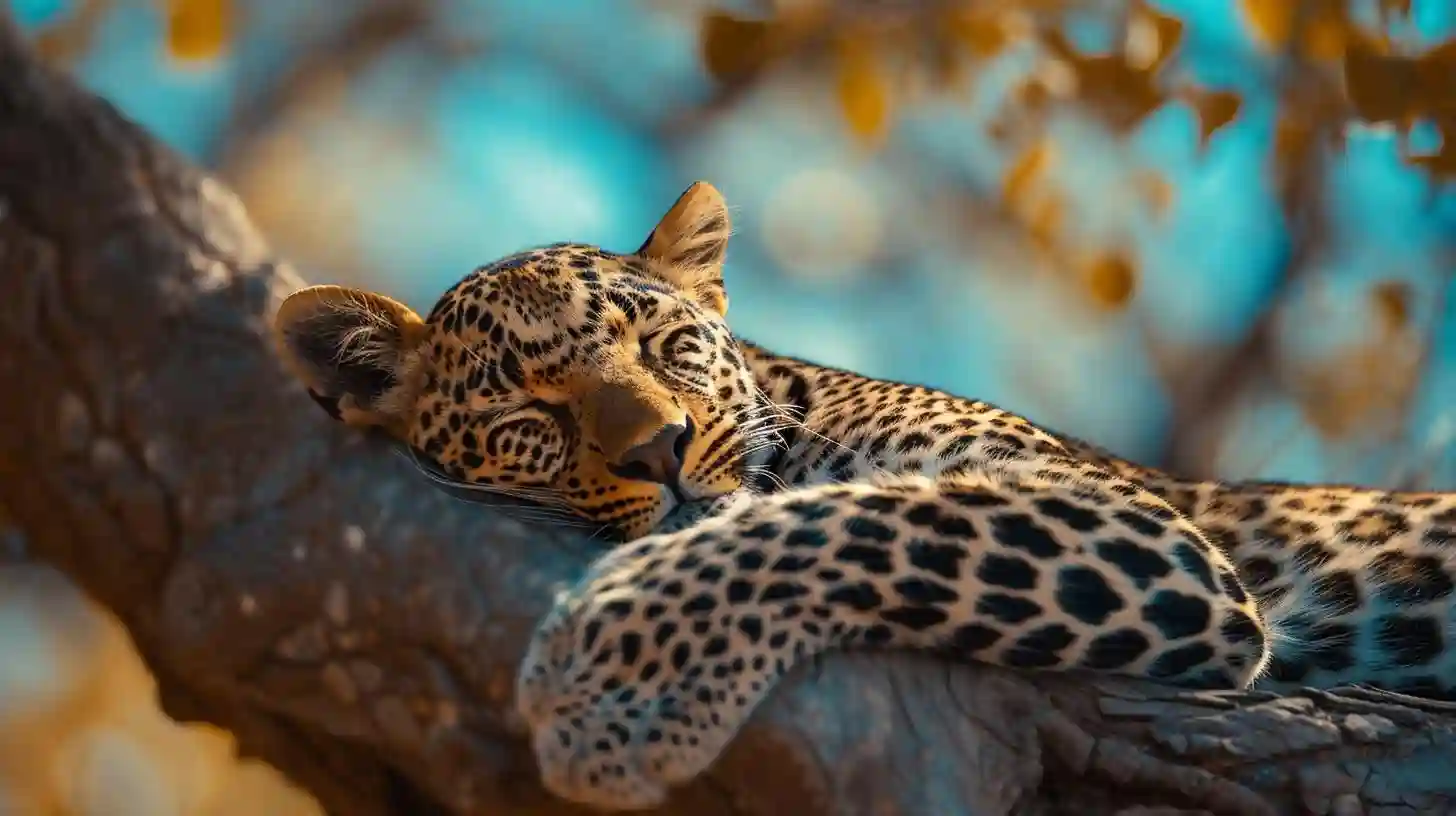
The African leopard, scientifically known as Panthera pardus, is one of the most elusive and magnificent big cats that roam the vast savannas, forests and mountains of Africa. With its beautiful spotted coat, stealthy movements and incredible hunting skills, the leopard is truly a symbol of grace, strength and adaptability in the African desert.
The African leopard is an adaptable predator that lives in a variety of habitats, from dense tropical forests to arid deserts. Its coat, composed of rosettes and spots of varying sizes and shapes, provides excellent camouflage in its environment, making it a master of stealth and ambush. The leopard's keen hearing, keen eyesight and strong jaws allow it to be an effective predator, hunting a variety of animals including antelope, gazelles, monkeys and even larger prey such as wildebeest and zebra.
One of the most notable characteristics of the African leopard is its ability to drag prey into trees to protect it from scavengers such as hyenas and lions. This behavior not only guarantees the leopard a stable food supply, but also helps to minimize competition with other predators in its territory. Despite being solitary creatures, leopards are territorial animals that mark their boundaries with scents, vocalizations, and claw marks on trees. These territorial markings serve as a warning to other leopards to stay away from their territory and help avoid confrontations between individuals.
The African leopard is a highly adaptable species that has managed to survive in an ever-changing environment. However, like many other big cat species, leopards face numerous threats to their survival, including habitat loss, poaching and human-wildlife conflict. As human populations continue to encroach on leopard habitats, conflicts between humans and leopards have become increasingly common, often resulting in retaliatory killing of these magnificent animals.
Conservation efforts are critical to ensuring the long-term survival of the African leopard. Protected areas such as national parks and sanctuaries play a vital role in conserving leopard populations and their habitats. In addition, community-based conservation initiatives that engage local communities in protecting leopards can help reduce human-wildlife conflicts and ensure coexistence between people and leopards in shared landscapes.
Research into the behaviour, ecology and genetics of African leopards is needed to understand their needs and implement effective conservation strategies. By studying the movements, feeding habits and social interactions of leopards, researchers can develop conservation plans that meet the specific needs of these magnificent animals. Advances in technology such as GPS tracking collars and camera traps have provided valuable information about leopards in the wild, helping researchers monitor populations and track their movements.
The African leopard is a remarkable and iconic species that plays a vital role in maintaining the balance of ecosystems in Africa. With its stealth, agility and adaptability, the leopard is a true symbol of wildlife and a testament to the beauty and diversity of the natural world. Conservation efforts are essential to protect the African leopard and ensure its survival so that future generations can admire and appreciate it. By working together to address the threats facing leopards and their habitat, we can ensure a better future for these majestic big cats and the ecosystems in which they live.